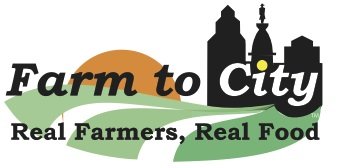To Everything There is a Season – Even Cheese
When you visit a cheese shop you see a lot of common buzzwords associated with cheese like cave ripened and triple crème and artisanal, just to name a few easy ones. One giant supermarket even sends their employees to “cheese school”.
But what you don’t learn in “cheese school” are the things that only a farmer will know.
That is, a farmer who gets up early every day to milk the animals. A farmer who knows the nuances of the milk itself. A farmer who gets to work making fantastic and interesting fresh cheeses made with that same milk.
Only that farmer understands the complexities of each cheese variety from season to season.
Isn’t that who you want to buy your cheese from?
A farmer who knows that, just like fruits and vegetables, farmstead cheeses are seasonal.
Spring is an Exciting Time for Dairies
What makes Spring so exciting in the farmers’ market world?
Because this is the time of year when we can finally go back to eating the fresh green foods growing outdoors under the sun. And we’re not the only ones changing our seasonal diets. The farm animals are doing it too, changing their diet from hay to grass.
According to Pete from Shellbark Hollow Farm, “going back to grass makes the goat milk whiter, lighter and cleaner.”
During these spring months, it’s always fun to try to taste that change of diet in the fresh soft cheeses coming to market, in the chevre, feta, ricotta, even mozzarella.
Spring Brings Baby Goats!
The breeding and birthing cycles are probably the most important factor in goat cheese production and, again, another reason why it’s so busy and exciting at the goat dairies in the Spring.
By late April, the goat farmers will have birthed all the kids. This year alone, Linden Dale Farm from Ronks, PA, saw 250 baby goats born on their farm this spring.
And now that the babies are born, the mother goats’ lactation cycle is at its peak.
This leaves the goat farm with an abundance of milk. Every year, goat farmers like Linden Dale and Shellbark Hollow use this abundance for the aged cheeses that sit on the racks waiting to ripen.
As an example, the Tomme variety from both Linden Dale and Shellbark Hollow is made from the milk when the lactation cycle is at its peak but will not be offered for sale for at least nine more months. According to Abe Mellinger of Linden Dale, “it’s really best, though, to let the Tomme age 12-18 months. That’s when it gets really good.”
For a quicker fix, Shellbark Hollow has the Maysiola, which is only aged for about two weeks and has, according to Craig LaBan, an “earthy, clover grass flavor of spring milk.”
Cows Go Back To Pasture
When cows go back to pasture, something a little different happens.
Unlike goats, cows have a gene for processing the beta-carotene in the fresh spring grass, the same beta-carotene found in carrots and sweet potatoes.
In the spring, that beta-carotene in the grass changes the color of the cow’s milk. “The milk becomes a rich golden color,” says Steve Dougherty from Haven Farmstead.
So when you see a cheese at market that has a golden or orangey color, you can assume that it was made when the cows were out in the fields, eating more grass than hay.
This photo from Haven Farmstead shows two cheeses side by side and shows the change of diet!
Both cheeses were produced in November 2020, and then cut open in April 2021. The cheese on the left (the “Alpine Vachetta”) is more golden because the cows were still eating grass. The cheese on the right (the “Farmhouse”) is from later in November when the cows went back to hay.
The Reality of the Cheese Industry
"We're a dying breed of cheesemaker out here who produces our own milk," Jeanne from Shellbark Hollow says. "That's because it's cheaper to buy [other peoples'] milk," Pete Shellbark adds. "But I can't buy the quality of milk that I make – and, man, that's what makes the cheese.”
This quote is from a conversation with Craig LeBan in 2018 and since that interview, sad to say, the number of farmers who operate their own creamery – whether it be goats, cows or other animals – has dwindled even more.
That’s one reason why it’s important to keep these farms operational by purchasing at Farmer’s Markets. The passion and understanding of the process and products cannot be measured.
Cheese Pairings
When you know when the animals were milked to make the cheese, then it’s fun to pair those cheeses with other seasonal ingredients.
In the spring, chevre and other soft cheeses go great with spring veggies like scallions and wild ramps, pea shoots, and greens like spinach and arugula.
Later in the summer, pair the cheeses with heirloom tomatoes, roasted peppers, and hearty fresh herbs like basil and sage.
In the fall, the spring milk has now been aged six-months and goes together well with the other flavors of autumn.
And of course — no matter what the season — we always recommend eating grilled cheese sandwiches on locally made bread and adding local cheese to the fresh pastas found at most of our markets.
Dairies Attending Farm to City Markets
Shellbark Hollow Farm, Pete and Jeanne, goat dairy, from Honey Brook: Rittenhouse, Bryn Mawr and Media markets
Linden Dale Farm, the Mellinger family, goat dairy, from Ronks: Swarthmore Market
Birchrun Hills Farm, Sue Miller, cow dairy, from Chester Springs: Bryn Mawr market
Haven Farmstead, Steve Dougherty, cow dairy, from New Tripoli: Chestnut Hill Market
Apple Tree Goat Dairy, Linda and the Nussbaum family all the way from Richfield, PA: Ambler Market






